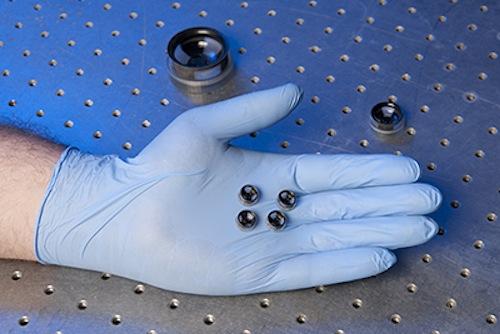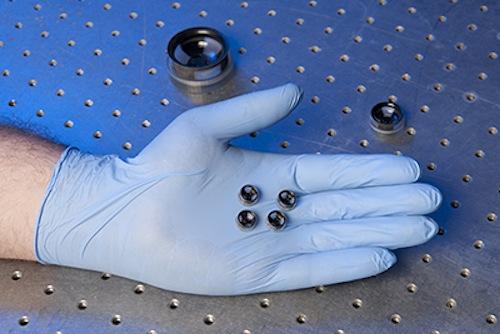Army Uses 3D-Printed Tentacles to Help Robots Manipulate Objects
March 25, 2013

3D printing and modeling robots after animals are two of the top trends in their respective fields. Now research by the Army has merged the two in the design of self-sealing suction cups to allow robots to grasp and pick up objects. Designed based on the suckers on the tentacles of an octopus, the invention could have applications for robots that can be used to replace humans to perform dangerous tasks and pick up and move objects and/or debris, according to Army scientists.
"Manipulation of unknown objects is a very difficult task for a robot," said Chad Kessens, a robotic manipulation researcher for the Army Research Laboratory (ARL) and a doctorate degree candidate in mechanical engineering at the University of Maryland, in a a press release. "In traditional applications, the robot would have a model for the object it wants to pick up, and would then know how to pick it up."

However, the technology developed by researchers -- a collaborative effort between the ARL, the Army's Edgewood Chemical Biological Center (ECBC), and the university -- could potentially make the grasping of unknown objects easier, he said.
To design the suction cup, Kessens and his team considered something roboticists have been doing for more than 50 years -- how the octopus uses what can be up to hundreds of suckers on its tentacles to pick up and grab its prey or hold onto rocks or other objects. The creatures can individually move the suction cup based on the objects they want to pick up, but the adaptation of this movement in robotic actuation has been limited to objects with a specific size and shape because the graspers use only one vacuum pump as a central suction source, researchers said. This limits the technology's effectiveness if some suction cups don't grasp properly, creating a leaking seal to the object.
To evolve this technology for more variability, Kessen's team created a self-sealing suction cup with a plug that sits in the suction inlet. When the cup's pump turns on, the plug of any cup not in contact with an object seals itself by sucking in, which increases the pressure differential, thus strengthening the suction capability of the cups grasping an object, researchers said. The design also leverages passive reaction forces so the cup activates and opens when it comes in contact with the object, breaking the seal to start suction.
Once the design was complete, researchers used 3D printing to rapid prototype the suction cups. The Advanced Design and Manufacturing Division of ECBC's Engineering Directorate took over this task, which had its challenges, said Brad Ruprecht, engineering technician and senior model maker, in the press release.
The biggest of those was the first determination of how small the cups could be while ensuring they function properly, which was done using a multi-material 3D printer. The team created protoypes made of elastomeric materials, including a liquid photo polymer that solidifies into plastic once exposed to ultraviolet light. More rigid materials like nylon were also used.
"When the suction cup shrunk in size, there was a huge challenge in getting the support material out of the clearances and overhangs without destroying it because it was very delicate at that point," Ruprecht said. To solve this problem, the team bought a Waterpik to spray on support material so as not to damage the delicate parts of the cups.
The cups are currently on their fourth iteration and range in size from the palm of a hand to the point of a fingertip. To provide an idea of their strength, four cups the size of a fingertip can grasp a wine bottle, according to the Army.
Researchers envision the technology's use to protect humans from peril after disasters or in other dangerous situations. This type of work was evidenced in Japan after the March 2011 earthquake, tsunami, and subsequent Fukushima nuclear power disaster, where a Toshiba four-legged robot was used to conduct recovery and investigative work in the reactor buildings of the plant.
Related posts:
About the Author(s)
You May Also Like



